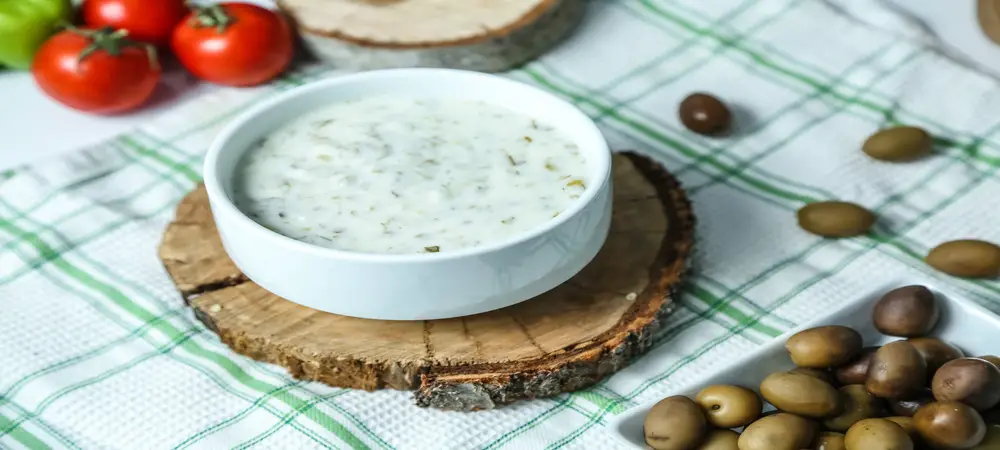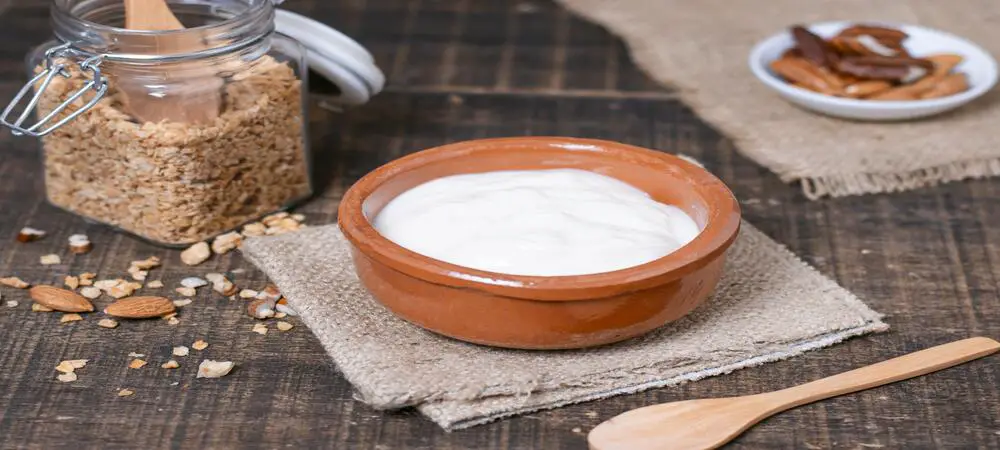Yogurt is a dairy product made by milk fermentation. According to Quora Users, Greek yogurt is the result of straining regular yogurt but it is not as dense as Turkish yogurt. Hence, we can conclude that Turkish yogurt would be a highly-strained variety of yogurt.
However, there is no unanimous consent on this by other users as they believe that it is just a matter of terminology. While Greek yogurt is the same as Turkish yogurt but it has been marketed with a different name which is touted as a marketing gimmick.
We somehow agree with this a bit as the founder of Chobani (holding the largest share of Greek Yogurt in the US market) is a Turkish-US businessman who introduced the concept of Greek Yogurt in the US.
Cultures of specific bacteria are used to make yogurt; these cultures form a “yogurt matrix” in which the bacteria is suspended and can survive for many years. Some lactobacilli strains have been shown to improve the bioavailability of dietary minerals, especially calcium and magnesium.
What is a Greek Yogurt?
Greek yogurt is known as “strained yogurt” in some North American countries, while it’s called “Greek-style yogurt” or simply just “yogurt”. It is often strained to remove water and thicken its consistency which results in a creamier product. The milk fat percentage can be increased up to 0.5% fat by adding cream before the heat treatment. The heat treatment, in this case, is necessary for sterilization and to make the milk thick enough to be strained. Greek yogurt may also be made without any additional cream or milk, yielding a higher protein content. Turkish yogurt’s thickness comes from the way it’s made; like many other yogurts, Turkish yogurt is made by heating and adding a bacterial starter culture then allowing it to ferment.
Related Posts:
- Kefir Vs. Yogurt – Which is better?
- Regular Vs Greek Yogurt – Which should I eat?
- Frozen Yogurt Vs Ice Cream – Which has low carbs?
- Yogurt Vs Curd – What’s the difference?
- Grass Fed Whole Milk Yogurt Vs Coconut Yogurt – What‘s the difference?
- Yogurt Vs Milk – How they are different in Nutrition?
- Sour Cream Vs Yogurt – Can you substitute them with each other?
What is a Turkish Yogurt?

Turkish yogurt is often made without any starter or freeze-dried lactic acid bacteria, which produce the necessary enzymes. It is trendy in the Balkans and the Middle East. The process of making Turkish yogurt results in higher moisture content than Greek yogurt.
Does Turkish Yogurt has Sugar?
According to Quora, Not just Turkish Yogurt, all kinds of yogurt contain some amount of galactose which comes from milk sugar called Lactose. Compared to milk, the lactose level in yogurt are considerably low due to the fermentation process. During fermentation, the lactose turns into lactic acid giving the yogurt a sour taste. So, we can conclude that the yogurt contains some natural sugar.
If you are new to the concept of Turkish Yogurt and want to try this, check out Merve Plain Turkish Yogurt.
Greek yogurt vs Turkish yogurt
The production method for Greek and Turkish yogurts is nearly the same. Still, the difference lies in what Greece and Turkey call them – these names reflect unique national preferences originating from their own distinct cultures.
Treatment
Greek yogurt is known as “strained yogurt” in some North American countries, while it’s called “Greek-style yogurt” or simply just “yogurt”. It is often strained to remove water and thicken its consistency which results in a creamier product. The milk fat percentage can be increased up to 0.5% fat by adding cream before the heat treatment.
The heat treatment, in this case, is necessary for sterilization and to make the milk thick enough to be strained. Greek yogurt may also be made without any additional cream or milk, yielding a higher protein content.
Turkish Yogurt is prepared in the same way with typically the same active cultures as the Greek Yogurt contain – Streptococcus thermophilius and Lactobacillus Bulgaricus.
Ingredients
Turkish yogurt’s thickness comes from the way it’s made; like many other yogurts, Turkish yogurt is made by heating and adding a bacterial starter culture then allowing it to ferment. The strains of bacteria used to produce traditional Western yogurts are different from the bacteria commonly found in Turkey.
Most commercial brands use thickeners such as pectin, starch, or gelatin; some thickening agents heat-process the yogurt after the bacteria is added.
Greek yogurt is usually made with cow’s or sheep’s milk, while Turkish yogurt is typically made from buffalo and cow’s milk. The fat content in Greek yogurt can be higher than 10%; it contains several times more lactose than regular yogurts since some of it is transformed into lactic acid and sugars during the fermentation process.
Consistency
Greek yogurt has more water than Turkish yogurt and a tangier flavor; some producers add gelatin or pectin for thickening, some add powdered milk, while others do not. Most Greek yogurts are strained twice to remove whole milk solids and thicken the yogurt.
Components
Greek yogurt often includes various flavors . The most significant differences between Greek and Turkish yogurts are that Turkish yogurts are strained more, allowing them to be higher in protein and lower in carbohydrates, cholesterol, and lactose; the texture is thick, rich, and creamy. Although greek yogurt is strained but lesser as compared to Greek and hence resulting in more lactose, carbohydrates, and calcium.
| Greek yogurt that has been strained several times is called “straggisto”, meaning “thickest” or “strongest” in Greek. |
Is Greek yogurt Turkish?

Is Turkish Yogurt healthy?
Turkish yogurt is a good source of calcium, protein, and phosphorus. It’s also deficient in fat, which makes it an excellent choice for people watching their weight. It can be used as a substitute for sour cream or mayonnaise on sandwiches. The best part is, that Turkish Yogurt is a low-calorie substitute for mayonnaise and sour cream.
Turkish yogurt, as well as Greek, may contain almost the same amount of sourness. But if the variety of Turkish yogurt is strained higher than Greek Yogurt may get sourer in the process.
Is Turkish Yogurt Sweet?
Like any other yogurt, Turkish yogurt contains natural sugar – lactose which is present in milk used to make the yogurt. Owing to its varieties, the taste of Turkish yogurt. Say, flavored Turkish yogurt are higher in sugar compared to the plain varieties.
Conclusion
There are two schools of thought on the difference between Turkish and Greek Yogurt. One believes that they both are the same and that Greek Yogurt is just a marketing gimmick. Turkish are the first ones to introduce yogurt to the world. The other believes that Turkish is a highly strained variety of yogurt, more strained than Greek Yogurt. It results in a thick consistency. As both Turkish yogurt and Greek Yogurt is available in different varieties, sometimes one variety of Turkish Yogurt may overlap the other variety of Greek yogurt, minimizing the difference between the two.





